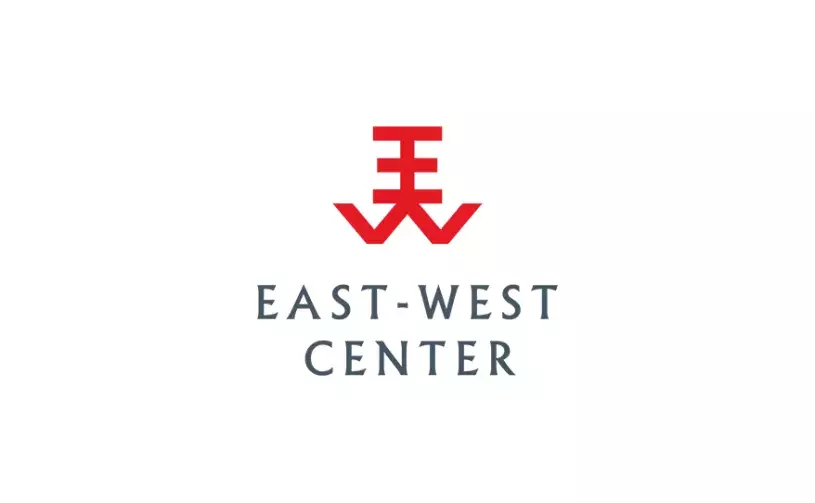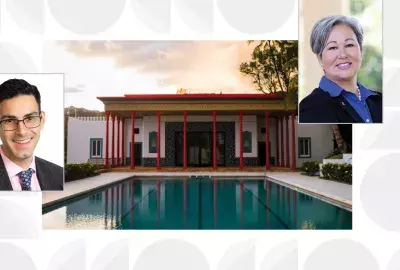Error message

By Wilmar Salim, Keith Bettinger, and Micah Fisher
HONOLULU (June 21, 2019)—With a population of more than 30 million, greater Jakarta is the largest metropolitan area in Southeast Asia and one of the most densely populated urban regions in the world. The city is a major economic engine for Indonesia, accounting for approximately 25 percent of the country’s gross domestic product. Yet urban poverty remains an intractable problem, and Jakarta’s infamous traffic congestion paralyzes commerce, leaches productivity, and contributes to air pollution and associated health hazards.
To make matters worse, Jakarta is one of the world’s most vulnerable cities to climate change. Indonesia’s capital has faced chronic flooding for years, primarily because the land is sinking due to unsustainable ground-water
extraction and excessive building and construction loads. Increased rainfall and sea-level rise exacerbate the frequency and extent of flooding. Today, 40 percent of the city is below sea level, and that proportion is growing.
In response, a coalition of government and private developers has devised a plan that would ostensibly address the city’s current urban problems and its ever-worsening climate-change crisis while bolstering its ambitions to become a “world city.” The scheme envisions the construction of a giant sea wall, which will create several large freshwater lagoons in what is now Jakarta Bay. These lagoons will serve as drainage reservoirs for the 13 rivers that flow through the Jakarta plain. Massive pumps will be used to prevent flooding, transferring water from the freshwater drainage lagoons to the bay. The sea wall and 17 artificial islands are also meant to protect Jakarta from sea-level rise, while at the same time creating a huge new urban quarter, built on reclaimed land, that is meant to provide housing and jobs for up to 1.5 million people.
This “Great Garuda” project takes its name from the mythical bird that serves as Indonesia’s national symbol. The ambitious design—in the shape of a Garuda bird—was put together by a re-emerging development coalition that includes government officials, private developers, and international investors who were active during the Suharto years.
Conglomerates that were established under Suharto were able to build real-estate empires based on close ties to the president, concessionary land grants, and an enabling legal and regulatory landscape. The corruption of this system led to the emergence of an oligarchic, land-developing elite and a yawning gap between those who could afford to live in the new developments and those who could not. The Asian financial crisis that began in 1997 and the subsequent toppling of the Suharto regime briefly threatened this system, but today, after nearly 20 years of reform, these elites have established a new growth coalition with provincial and national planning officials and foreign construction firms.
The coastal flooding that struck Jakarta in 2007 signaled the beginning of a process that allowed this coalition to gradually rebrand its waterfront development ambitions in the name of flood control. Despite this branding, the project has been controversial and has elicited a significant outcry from academics and nongovernmental organizations. Even the Minister of Maritime Affairs and Fisheries has asserted that the Great Garuda project would alter ocean currents, increase erosion on existing islands, and exacerbate flooding.
In fact, the Great Garuda project not only represents a serious misallocation of resources, but it also threatens to leave the city more vulnerable to future climate change. Most obviously, massive dredging and land reclamation will have a tremendous greenhouse-gas footprint, given the immense scale of the planned construction. There is a strong possibility that continued land subsidence, coupled with the sea wall and sedimentation in the enclosed bay, will gradually reduce the capacity of the drainage lagoons, turning them into gigantic cesspools of urban refuse and dirty water and actually exacerbating flooding in the city.
By creating exclusive residential enclaves on reclaimed land, the project will also increase the gap between the haves and have-nots in the city. It will entail the relocation of tens of thousands of poor households that rely on small-scale fishing and aquaculture in Jakarta Bay and will disrupt their livelihoods. And it will do little if anything to ease the housing crisis for the tens of thousands of poor migrants who move to Jakarta every year. In fact, it will direct city resources away from the task of providing services for these residents.
The Great Garuda project could have a massive effect in terms of missed opportunities for other, potentially more beneficial, urban development. It is projected to cost approximately US$40 billion over 30 years, equivalent to nearly 5 percent of Indonesia’s current gross domestic product. By locking up this level of financial resources and administrative effort over three decades, the project greatly decreases the flexibility required to build resilience against uncertain environmental threats. Plus, this degree of privatization undermines the participatory processes that are essential to effective adaptation and resilience building.
The massive sea wall and other structures represent an all-in, go-for-broke gamble that could potentially greatly increase the city’s vulnerability to climate change. If the Great Garuda project’s return on investment fails to meet expectations, the government may be saddled with an expensive and problematic white elephant for decades to come.
###
This East-West Wire is based on Wilmar Salim, Keith Bettinger, and Micah Fisher (2019), Maladaptation on the waterfront: Jakarta’s growth coalition and the Great Garuda, Environment and Urbanization ASIA, 10(1): 63–80.
Wilmar Salim is Associate Professor at the Institute Teknologi Bandung. He can be reached at [email protected]. Keith Bettinger is an Adjunct Fellow in the East-West Center’s Research Program. He can be reached at [email protected]. Micah Fisher is an Associate at the Dala Institute and Visiting Faculty at Hasanuddin University. He can be reached at [email protected].
Download a pdf version of this Wire article.
The East-West Wire is a news, commentary, and analysis service provided by the East-West Center in Honolulu. All or any part of the Wire content may be used by media with attribution to the East-West Center or the person quoted. To receive Wire articles via email, subscribe here. For links to all East-West Center media programs, fellowships and services, see EastWestCenter.org/Journalists.
The full list of East-West Wires produced by the Research Program is available on the East-West Center website at EastWestCenter.org/Research-Wire. For more on the East-West Center Research Program, see EastWestCenter.org/Research.
The East-West Center promotes better relations and understanding among the people and nations of the United States, Asia, and the Pacific through cooperative study, research, and dialogue.
Series editors:
Derek Ferrar
[email protected]
Sidney B. Westley
[email protected]
The views expressed are those of the authors and do not necessarily reflect the policy or position of the East-West Center or any organization with which the authors are affiliated.
By Wilmar Salim, Keith Bettinger, and Micah Fisher
HONOLULU (June 21, 2019)—With a population of more than 30 million, greater Jakarta is the largest metropolitan area in Southeast Asia and one of the most densely populated urban regions in the world. The city is a major economic engine for Indonesia, accounting for approximately 25 percent of the country’s gross domestic product. Yet urban poverty remains an intractable problem, and Jakarta’s infamous traffic congestion paralyzes commerce, leaches productivity, and contributes to air pollution and associated health hazards.
To make matters worse, Jakarta is one of the world’s most vulnerable cities to climate change. Indonesia’s capital has faced chronic flooding for years, primarily because the land is sinking due to unsustainable ground-water
extraction and excessive building and construction loads. Increased rainfall and sea-level rise exacerbate the frequency and extent of flooding. Today, 40 percent of the city is below sea level, and that proportion is growing.
In response, a coalition of government and private developers has devised a plan that would ostensibly address the city’s current urban problems and its ever-worsening climate-change crisis while bolstering its ambitions to become a “world city.” The scheme envisions the construction of a giant sea wall, which will create several large freshwater lagoons in what is now Jakarta Bay. These lagoons will serve as drainage reservoirs for the 13 rivers that flow through the Jakarta plain. Massive pumps will be used to prevent flooding, transferring water from the freshwater drainage lagoons to the bay. The sea wall and 17 artificial islands are also meant to protect Jakarta from sea-level rise, while at the same time creating a huge new urban quarter, built on reclaimed land, that is meant to provide housing and jobs for up to 1.5 million people.
This “Great Garuda” project takes its name from the mythical bird that serves as Indonesia’s national symbol. The ambitious design—in the shape of a Garuda bird—was put together by a re-emerging development coalition that includes government officials, private developers, and international investors who were active during the Suharto years.
Conglomerates that were established under Suharto were able to build real-estate empires based on close ties to the president, concessionary land grants, and an enabling legal and regulatory landscape. The corruption of this system led to the emergence of an oligarchic, land-developing elite and a yawning gap between those who could afford to live in the new developments and those who could not. The Asian financial crisis that began in 1997 and the subsequent toppling of the Suharto regime briefly threatened this system, but today, after nearly 20 years of reform, these elites have established a new growth coalition with provincial and national planning officials and foreign construction firms.
The coastal flooding that struck Jakarta in 2007 signaled the beginning of a process that allowed this coalition to gradually rebrand its waterfront development ambitions in the name of flood control. Despite this branding, the project has been controversial and has elicited a significant outcry from academics and nongovernmental organizations. Even the Minister of Maritime Affairs and Fisheries has asserted that the Great Garuda project would alter ocean currents, increase erosion on existing islands, and exacerbate flooding.
In fact, the Great Garuda project not only represents a serious misallocation of resources, but it also threatens to leave the city more vulnerable to future climate change. Most obviously, massive dredging and land reclamation will have a tremendous greenhouse-gas footprint, given the immense scale of the planned construction. There is a strong possibility that continued land subsidence, coupled with the sea wall and sedimentation in the enclosed bay, will gradually reduce the capacity of the drainage lagoons, turning them into gigantic cesspools of urban refuse and dirty water and actually exacerbating flooding in the city.
By creating exclusive residential enclaves on reclaimed land, the project will also increase the gap between the haves and have-nots in the city. It will entail the relocation of tens of thousands of poor households that rely on small-scale fishing and aquaculture in Jakarta Bay and will disrupt their livelihoods. And it will do little if anything to ease the housing crisis for the tens of thousands of poor migrants who move to Jakarta every year. In fact, it will direct city resources away from the task of providing services for these residents.
The Great Garuda project could have a massive effect in terms of missed opportunities for other, potentially more beneficial, urban development. It is projected to cost approximately US$40 billion over 30 years, equivalent to nearly 5 percent of Indonesia’s current gross domestic product. By locking up this level of financial resources and administrative effort over three decades, the project greatly decreases the flexibility required to build resilience against uncertain environmental threats. Plus, this degree of privatization undermines the participatory processes that are essential to effective adaptation and resilience building.
The massive sea wall and other structures represent an all-in, go-for-broke gamble that could potentially greatly increase the city’s vulnerability to climate change. If the Great Garuda project’s return on investment fails to meet expectations, the government may be saddled with an expensive and problematic white elephant for decades to come.
###
This East-West Wire is based on Wilmar Salim, Keith Bettinger, and Micah Fisher (2019), Maladaptation on the waterfront: Jakarta’s growth coalition and the Great Garuda, Environment and Urbanization ASIA, 10(1): 63–80.
Wilmar Salim is Associate Professor at the Institute Teknologi Bandung. He can be reached at [email protected]. Keith Bettinger is an Adjunct Fellow in the East-West Center’s Research Program. He can be reached at [email protected]. Micah Fisher is an Associate at the Dala Institute and Visiting Faculty at Hasanuddin University. He can be reached at [email protected].
Download a pdf version of this Wire article.
The East-West Wire is a news, commentary, and analysis service provided by the East-West Center in Honolulu. All or any part of the Wire content may be used by media with attribution to the East-West Center or the person quoted. To receive Wire articles via email, subscribe here. For links to all East-West Center media programs, fellowships and services, see EastWestCenter.org/Journalists.
The full list of East-West Wires produced by the Research Program is available on the East-West Center website at EastWestCenter.org/Research-Wire. For more on the East-West Center Research Program, see EastWestCenter.org/Research.
The East-West Center promotes better relations and understanding among the people and nations of the United States, Asia, and the Pacific through cooperative study, research, and dialogue.
Series editors:
Derek Ferrar
[email protected]
Sidney B. Westley
[email protected]
The views expressed are those of the authors and do not necessarily reflect the policy or position of the East-West Center or any organization with which the authors are affiliated.
East-West Wire
News, Commentary, and Analysis
The East-West Wire is a news, commentary, and analysis service provided by the East-West Center in Honolulu. Any part or all of the Wire content may be used by media with attribution to the East-West Center or the person quoted. To receive East-West Center Wire media releases via email, subscribe here.
For links to all East-West Center media programs, fellowships and services, see www.eastwestcenter.org/journalists.







